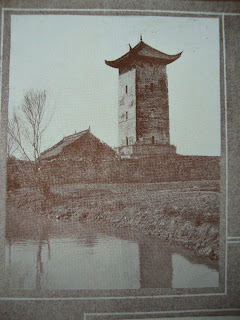Sometimes it seems as though the title choice for a book is as important than what's inside. Consider how iconic some book titles have become:
To Kill a Mockingbird,
Ulysses,
The Jungle,
One Hundred Years of Solitude,
Silent Spring, and
Gone with the Wind, for example. Not that I aspire to such heights (well, not realistically, anyway), but the cultural ubiquity of such renowned titles made me conscious of a title's role as metaphorical shorthand for its book's content and meaning.
As I wrote and revised
Beautiful Su, I occasionally thought about prospective titles. Given that Westerners would generally not know what a "Suzhou" was, or even that it was associated with China, an explanatory subtitle would be essential. Nevertheless, a short but meaningful main title was still called for. How was I going to capture 2,500 years of history and culture for a famed city in just a few words and still make it meaningful, or even comprehensible? So many possibilities just seemed so mundane.
I stumbled across the answer one day while writing about Hampden C. DuBose, a Presbyterian minister who spent most of his and his family's life in Suzhou. In 1888, after his first sixteen years there, DuBose penned a series of three linked articles about the city -- all titled "Soochow: The Capital of Kiangsu" -- for the
The Chinese Recorder and Missionary Journal. His series went to some length attempting to introduce Suzhou's long history and esteemed culture to a Western readership, achieving one of the more comprehensive efforts to that date.
Sensing an opportunity as more and more Westerners flocked to turn-of-the-century China, Shanghai publisher Kelly & Walsh engaged DuBose to update and extend his
Chinese Recorder articles into an 1899 pamphlet-cum-travel-guide under the title
"Beautiful Soo": The Capital of Kiangsu. In 1911, Kelly & Walsh released a second and final (and regrettably posthumous) edition of DuBose's work, revised and updated by the author under the more pragmatic title
"Beautiful Soo": A Handbook to Soochow, the Capital of Kiangsu. Prefaced with ads by the likes of Tsingtao Beer, Shanghai's Astor Hotel, and Soochow's Village Inn, generously supplied with photographs of Soochow sites and scenes, and accompanied by a foldout city map, the 80-page booklet closes with a congratulatory message to the city as it embarked on its twenty-fifth century "…with the wisdom of mature years, and the vigor of young manhood…." Little could DuBose have known what that next century would bring.
It seemed clear from the embedded quotation marks that the term "Beautiful Soo" held particular meaning for Reverend DuBose, and it finally dawned on me just what it might have been. The most famous adage attached to Suzhou states, in pinyin form, "Xiang you tian tang, xia you Su Hang," variously translated as "Above there is heaven, here below are Suzhou and Hangzhou." In Chinese poetic fashion, the characters for "Su Hang" were more than enough to signify the names of the two cities revered as heaven on earth, although DuBose would have spelled them "Soo Hang." His "Beautiful Soo" was not only a personal statement of his love for his adopted city, but also an allusion to the centuries-old adage by which Suzhou was best known.
At that point, the choice of title was easy.
Beautiful Su was both my tip of the hat - a quiet homage - to Reverend DuBose and his pamphlet history of a century past and an acknowledgment of the Chinese people's longstanding assessment of Su (and Hang) as special places in their past, and still a "Beautiful Su" in their present.
















































